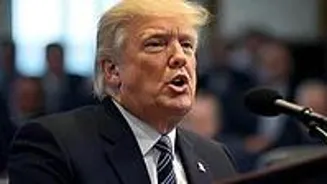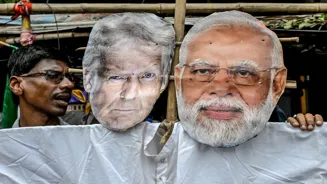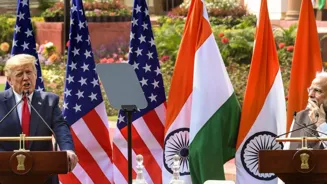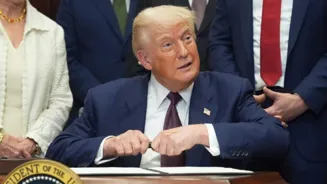On Thursday (August 7), Trump’s reciprocal tariffs, which he announced a week ago, snapped into place. Few of America’s major trading partners have been spared under Trump’s updated slate of duties, which together have sent the average effective US tariff rate to its highest level in nearly a century.
Among those hit by the new tariffs is India, which has been slapped with a 25 per cent levy. However, that’s not it. Trump, on Wednesday (August 6) also announced
Catch all the live updates on Donald Trump's tariffs here
Trump’s tariffs on India
As part of the executive order that Trump signed last week, India’s tariff was increased to 25 per cent. Then on Wednesday, he ramped up the tariff rate by levying another 25 per cent as punishment for purchasing Russian oil.
According to the executive order, the 25 per cent tariff for buying Russian oil will come into effect 21 days later, on August 27.
Earlier in the week, Trump had threatened India with the new tariffs, saying they were helping Russia wage war in Ukraine. “India is not only buying massive amounts of Russian Oil, they are then, for much of the oil purchased, selling it on the open market for big profits. They don’t care how many people in Ukraine are being killed by the Russian war machine,” he wrote on social media.
However, in its defence, India said Delhi had already made clear its stance on imports from Russia, and reiterated that the tariff is “unfair, unjustified and unreasonable”. In a statement, the Ministry of External Affairs said, “It is therefore extremely unfortunate that the US should choose to impose additional tariffs on India for actions that several other countries are also taking in their own national interest.
“India will take all actions necessary to protect its national interests.”
Prime Minister Narendra Modi also issued a strong reaction to the tariffs imposed by Trump, saying, “The interest of farmers is our top priority. India will never compromise with the interests of its farmers, livestock holders, and fishermen. And I know that I will have to pay a huge price for this personally, but I am ready. India is ready, for the sake of the country’s farmers, fishermen and livestock holders.”
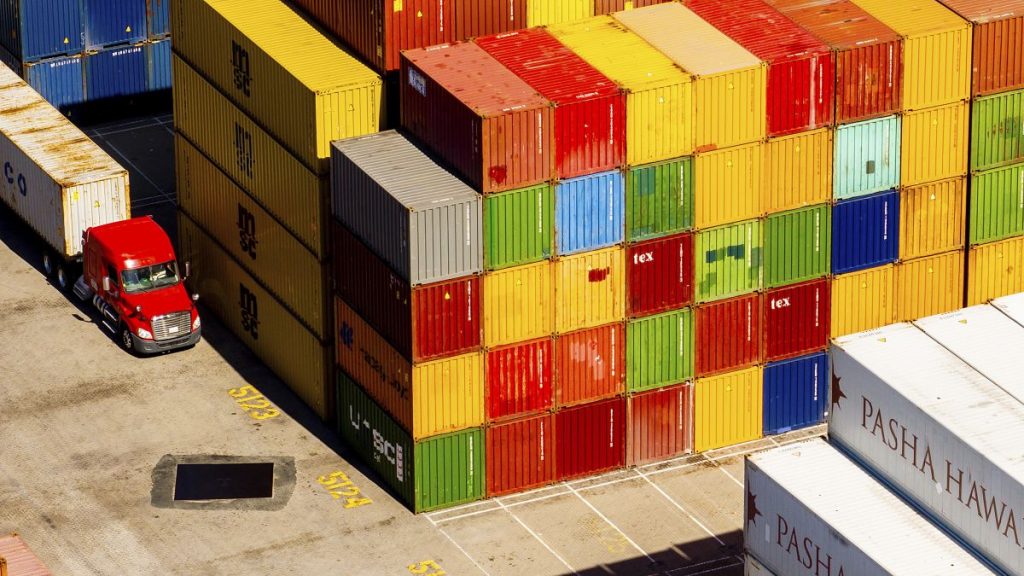
Cargo containers line a shipping terminal at the Port of Oakland as Trump's new
tariffs for over 90 countries come into effect. AP
Trump tariffs on other countries
But India isn’t the only nation that has been slapped with tariffs. More than 90 countries have been slapped with varying degrees of tariffs — ranging from 10 per cent to as high as 41 per cent.
Before Thursday, virtually every country’s goods were subject to a minimum 10 per cent tariff. Now rates vary substantially from country to country. The highest rates imposed are on goods from Brazil(50 per cent), Laos (40 per
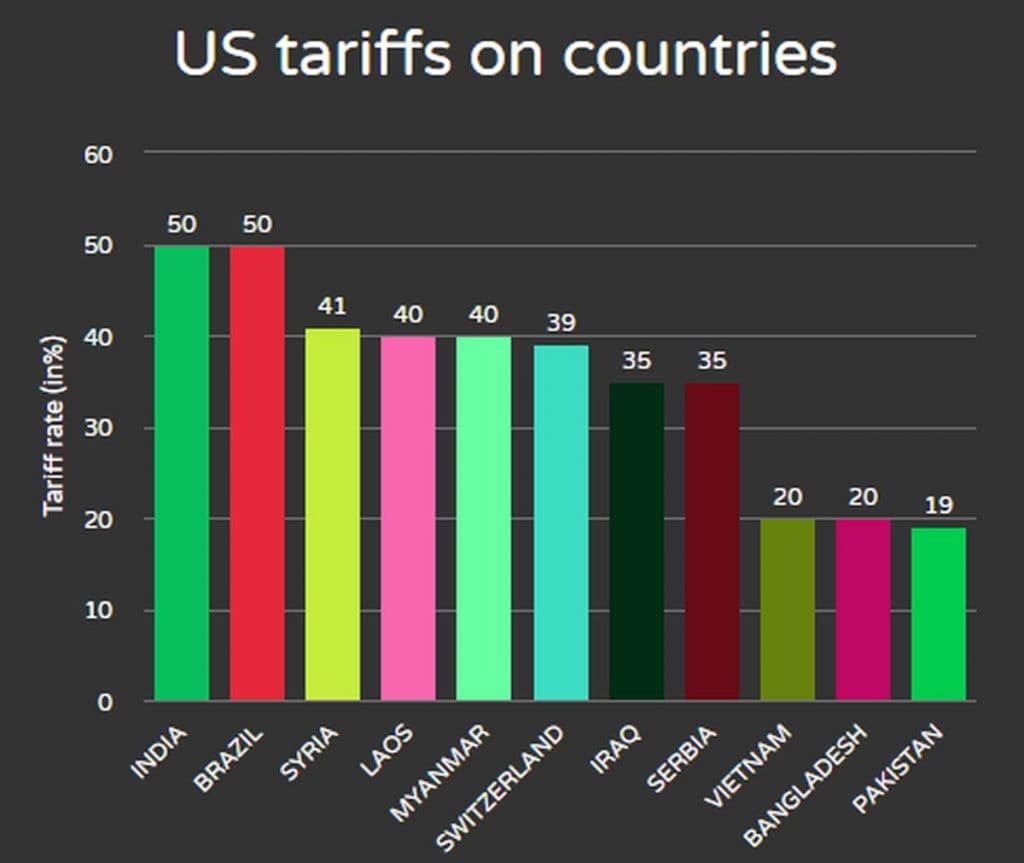
An additional 21 countries also face levies greater than 15 per cent. This includes several countries the US relies heavily on for a variety of goods, such as Vietnam (20 per cent), Taiwan (20 per cent) and Thailand (19 per cent).
According to the list published by the White House last week, members of the European Union will be subjected to a 15 per cent tariff.
Last week, Trump also boosted the
But most Canadian exports to the US will dodge the import tax due to an existing trade treaty — the United States-Mexico-Canada Agreement (USMCA).
Notably, India’s tariffs are among the highest among the Asian countries. Its neighbours Pakistan, Bangladesh and Sri
Status of trade deals
Trump’s new tariffs come into effect even as countries continue to negotiate with the Trump administration on trade deals. Countries like the UK, Japan and South Korea have already reached agreements to get lower tariffs than Trump threatened in April.
Meanwhile other countries are still trying to negotiate deals. For instance, Swiss President Karin Keller-Sutter and Economy Minister Guy Parmelin were in Washington on
China, too, is in the midst of negotiating a trade deal with the US with an August 12 deadline looming over them.
India is also trying to negotiate a trade deal with the United States. The last talks between the two delegations was in mid-July but no breakthrough could be achieved. The next set of talks is reportedly scheduled for the second half of August.
However, it
With inputs from agencies



